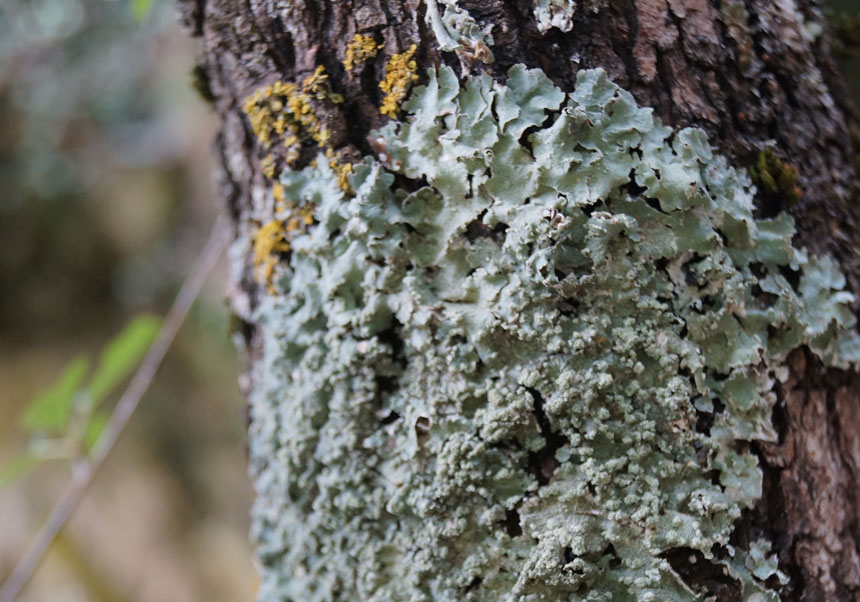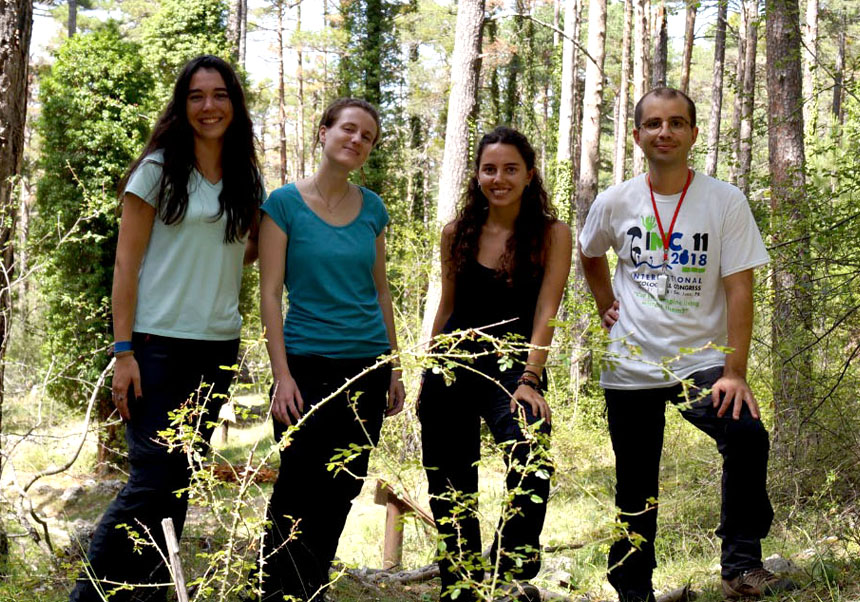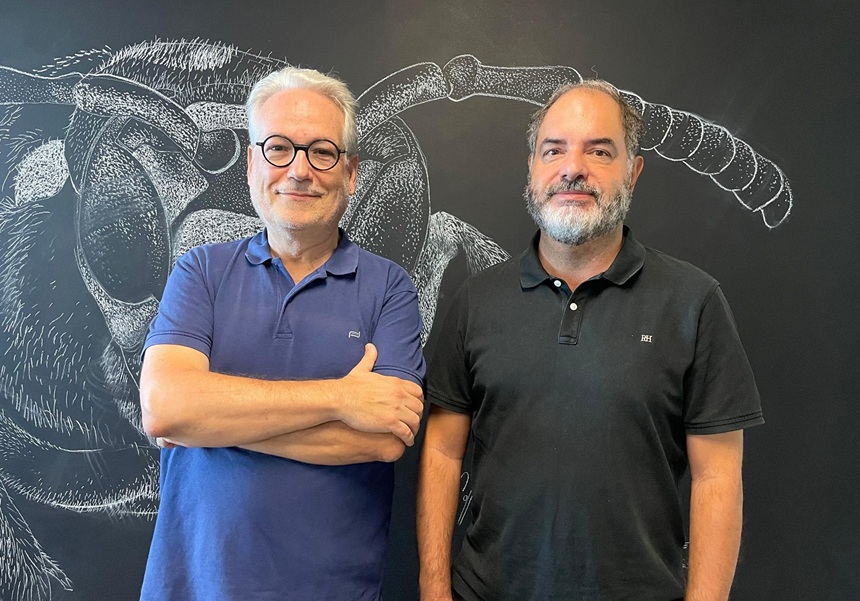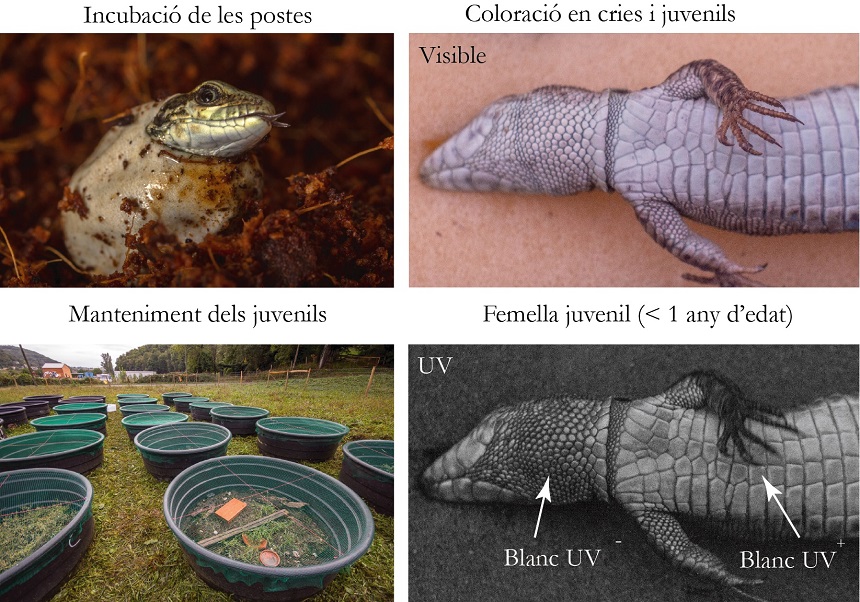Lichen found in Penyagolosa Natural Park appears for the first time in Europe
- Scientific Culture and Innovation Unit
- February 24th, 2025

Researchers from the Department of Botany and Geology at the University of Valencia and VAERSA, among others, have compiled the first catalogue of lichens and lichenicolous fungi in Penyagolosa Natural Park, where they have discovered Punctelia caseana, a species recorded in Europe for the first time. Additionally, the study includes a species listed as endangered in the Valencian Community’s red list of threatened lichens, Xanthoparmelia camtschadalis. Published in the journal Mediterranean Botany, this research enhances the conservation value of protected areas in Valencia, as lichens are excellent bioindicators of environmental change.
Punctelia caseana, now cited for the first time in Europe, was previously only known in North America. It is a foliose lichen that grows on the bark of the St Lucie cherry (Prunus mahaleb). Furthermore, six lichenicolous fungi have been recorded for the first time in Valencian territory. Of the 20,000 known species of lichenised fungi worldwide, 2,426 are found in the Iberian Peninsula and the Balearic Islands, with 830 cited in the Valencian Community, many of which inhabit various protected areas.
The study documents 221 lichen species, more than have previously been found in other protected natural areas such as Tinença de Benifassà Natural Park (Castellón), Font Roja Natural Park (Alicante) or Devesa de l’Albufera (Valencia).
“Penyagolosa and its surrounding area is a treasure trove of fungal diversity, including lichens, and the molecular and phylogenetic studies we plan to conduct will reveal even more species that were previously unrecorded in our region, possibly even new species for science”, said Isaac Garrido, lead author of the study and researcher at the Department of Botany and Geology of the University of Valencia. Other contributors include Laura Escribano and Violeta Atienza, from the same department, and Simón Fos, from VAERSA (Wildlife Service and Natura 2000 Network).
The study also identifies 12 parasitic fungi of lichens (lichenicolous fungi). Lichens represent a mutualistic symbiotic association between fungi and photosynthetic organisms, such as microalgae and/or cyanobacteria, and can be found on various substrates, including rocks (saxicolous lichens), tree bark (epiphytic lichens) and soil (terricolous lichens).
Large rock surfaces in the Penyagolosa Natural Park are covered by saxicolous lichens, which typically form colourful crusts. These crustose lichens also grow on the living bark of young trees, with common examples belonging to the genera Lecanora, Lecidella and Caloplaca, all abundant in Penyagolosa.
However, on the bark of mature pines and holm oaks, lichens that grow forming lamellae (foliose lichens) are more common, particularly from the Parmeliaceae and Physciaceae families. The grey-coloured foliose lichen Pseudevernia furfuracea is the most abundant species on pine bark in the park. Additionally, fruticose lichens, which develop shrub-like structures, can be found on holm oak bark (Ramalina species) and on pine trees (Bryoria fuscescens and Usnea hirta).
The study also highlights that more than half of the lichens found in Penyagolosa Natural Park produce sexual reproductive structures, such as apothecia, and that the majority of lichen symbiotic relationships involve an ascomycete fungus and a unicellular green alga from the genus Trebouxia. The prevalence of these characteristics, compared to the rarity of species that reproduce asexually, may be influenced by the lack of ancient forests in the studied area.
Future field studies should enhance knowledge of the conservation status and distribution of these lichens in the park, especially Xanthoparmelia camtschadalis, which is on the red list, and assess the diversity of species growing on different plant substrates, such as the bark of holm oak (Quercus rotundifolia), Mediterranean maple (Acer opalus ssp. granatense) and Scots pine (Pinus sylvestris), to inform future forest resource management plans.
Other contributors to the study include Lucía Vidal (University of Barcelona), Juan Carlos Zamora (Geneva Botanical Garden and Conservatory), María José Chesa (Barcelona Cicle de l’Aigua, SA) and Laura Force (Centre for Ecological Research and Forestry Applications, CREAF). This research complements studies on lichens funded by the Spanish Ministry of Science project PID2021-127087NB-I00, entitled “Las microalgas verdes simbióticas como factores clave de las respuestas de los líquenes a los cambios ambientales (MALSE)” (Symbiotic green microalgae as key factors in lichen responses to environmental change).
Article reference: Garrido-Benavent, I., Escribano, L., Atienza, V., Vidal, L., Zamora, J.C., Chesa, M.J., Force, L. & Fos, S. 2025. «Checklist of lichenized and lichenicolous fungi from the Penyagolosa Massif and nearby areas (Castelló, Eastern Iberian Peninsula)». Mediterr. Bot. 46 (1), e93233. https://doi.org/10.5209/mbot.93233
Annex photo caption:
Collection of lichens in July 2024 for the molecular and phylogenetic study of lichenised fungi and algae. From left to right: María Gómez, Marina Martín, Laura Escribano and Isaac Garrido. Photo: Laura Escribano.
Categories: Recerca, innovació i transferència , Facultat de Ciències Biològiques , Investigació a la UV , Internacionalització recerca , Difusió i comunicació científica



















